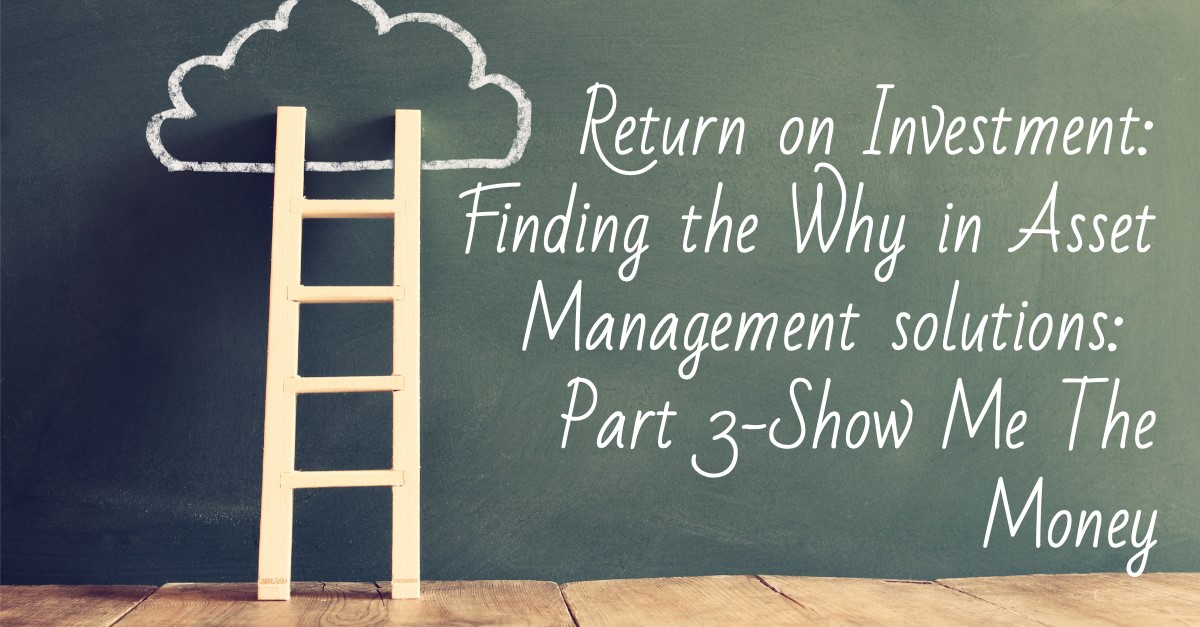In earlier posts, we talked about the three key components of the ROI for an Asset Management Solution (AMS) – Data, Money and Ease of Use. Last week, we talked about Data. This week, we’ll focus on the Money.
You may have many reasons for seeking an AMS – need for better data, easier for the users, preference for automation, etc. However, unless the money aspect of the Return is solid, you may never even get approval for the project. This return extends beyond a simple price tag. It’s a lot like buying a car – you have to look at the whole cost of owning the car, not just the purchase price, to understand what your full investment will be and what you’ll get in return.
Break down the investment
So what is the whole cost of an AMS. You have to buy the software – which is like the sticker price on the car. In order to legally use the car – there are taxes, registration fees, etc. For an AMS, these are your implementation fees. Like licensing, these are another one-time investment. But depending on how complicated your needs are, what network connectivity and equipment you already have in place, how much training your users and administrators will need – standing up an AMS could really impact your costs.
Once the AMS is in place, there are the ongoing investments needed to keep the system in optimal form such as maintenance, periodic training, user support and any time your IT department spends to administer the system. If the AMS you choose requires significant time and attention, the ongoing costs might really throw off your ROI.
The Bang for your Buck
In light of the investment – where’s the return? The cost savings, like the investment, come in a few different forms:
- Labor savings:
- It should take less time to conduct your inventories o You should see significant savings in the first inventory activity (faster to complete from asset to PS) and ongoing savings every time the solution is used
- Found Assets: An effective AMS will pay for itself in the first inventory in found assets alone
- Accuracy will be significantly improved when an AMS can get the inventory data directly from the asset to PeopleSoft, without hand written notes or key entries
- Fewer Asset Purchases: When you know what you have, where you have it and what condition it is in, asset purchases will be lowered
- Eliminate replacements for assets thought to be lost
- Minimize need for a “pool of spares”
- Extend the useful life of the asset – actually use and benefit from what you’ve already purchased




